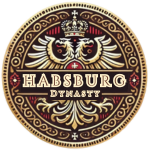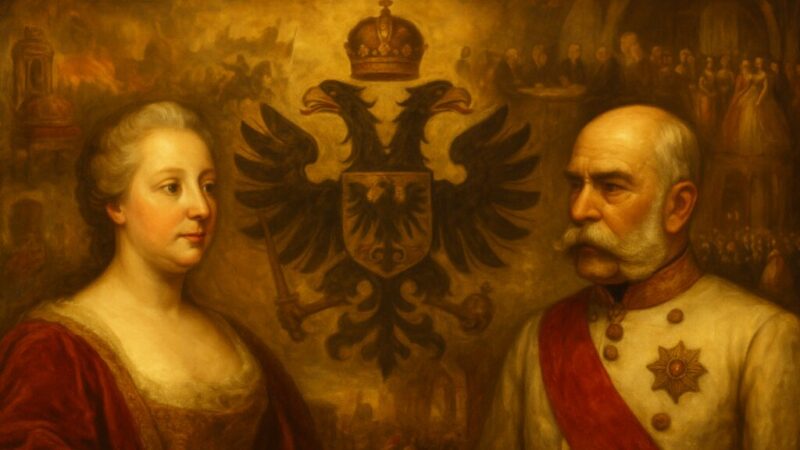The history of the Habsburgs is also the story of how Europe’s map kept changing.
From Rudolf I’s election in 1273 to the empire’s fall in 1918, the Habsburg name sat close to the center of power.This page presents a carefully curated timeline based on reliable primary sources and established scholarship.
Chapter 1 | Toward a Hereditary Imperial Crown (–1493)
| Year | Event | Visual |
|---|---|---|
| 1020 | Construction of Habsburg/Habichtsburg Castle |
 AI generated image |
| 1250 | Start of the Interregnum |
 AI generated image |
| 1273 | Rudolf I elected King of the Romans |
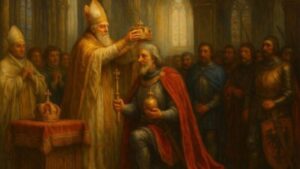 AI generated image |
| 1278 | Battle on the Marchfeld (Ottokar II defeated) |
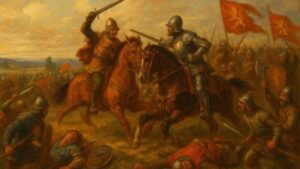 AI generated image |
| 1282 | Start of Habsburg rule in Austria |
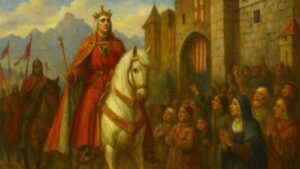 AI generated image |
| 1291 | Death of Rudolf I; Swiss Confederation begins to emerge |
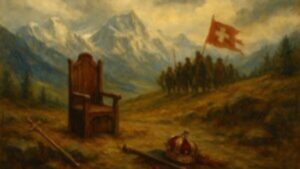 AI generated image |
| 1298 | Albert I elected King of the Romans |
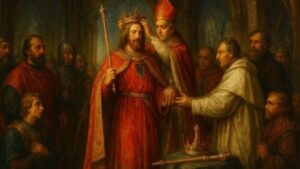 AI generated image |
| 1308 | Assassination of Albert I |
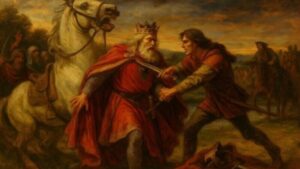 AI generated image |
| 1356 | Emperor Charles IV issues the Golden Bull |
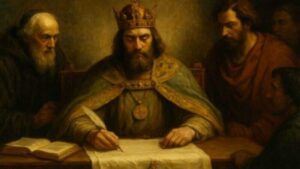 AI generated image |
| 1438 | Albert II elected King of the Romans |
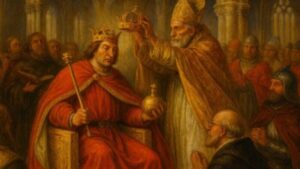 AI generated image |
| 1440 | Frederick III becomes Holy Roman Emperor (the office effectively becomes hereditary thereafter) |
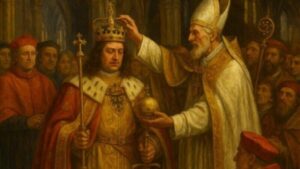 AI generated image |
| 1477 | Maximilian I marries Mary of Burgundy |
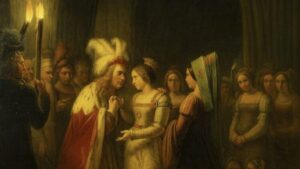 AI generated image |
| 1493 | Death of Frederick III; Maximilian succeeds |
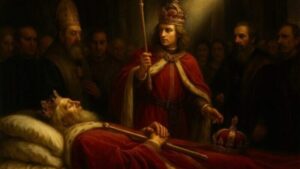 AI generated image |
Chapter 2 | The Making of a “World Empire” (1493–1556)
| Year | Event | Visual |
| 1494 | Italian Wars begin |
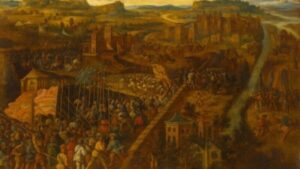 AI generated image |
| 1495 |
Imperial Reform (Imperial Circles) |
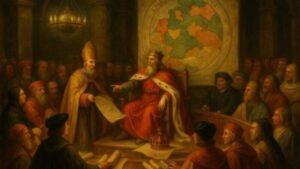 AI generated image |
| 1497 | “Double marriage” policy with the Spanish royal house |
 AI generated image |
| 1508 | Maximilian I adopts the imperial title (without papal coronation) |
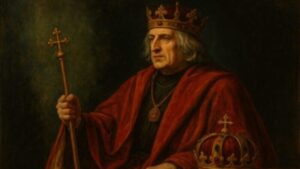 AI generated image |
| 1516 | Charles (I of Spain / V of HRE) becomes King of Spain |
 AI generated image |
| 1517 | Luther’s 95 Theses (start of the Reformation) |
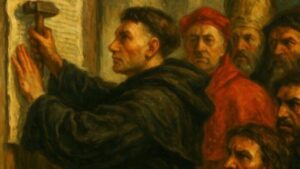 AI generated image |
| 1519 | Death of Maximilian I; Charles V elected emperor |
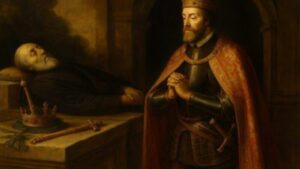 AI generated image |
| 1521 | Cortés conquers the Aztec Empire |
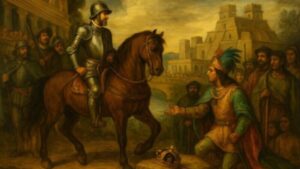 AI generated image |
| 1526 | Battle of Mohács; Habsburg succession to Bohemia & Hungary |
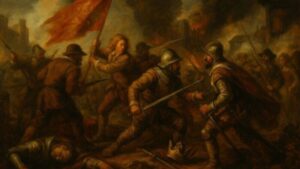 AI generated image |
| 1529 | First Siege of Vienna by the Ottomans |
 AI generated image |
| 1530 | Charles V crowned emperor at Bologna (last papal coronation) |
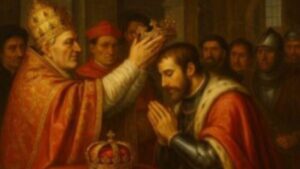 AI generated image |
| 1538 | Battle of Preveza; Spanish fleet defeated |
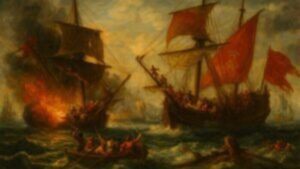 AI generated image |
| 1545 | Council of Trent opens (to 1563) |
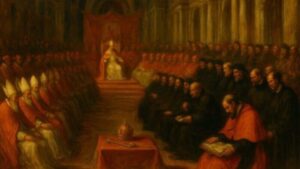 AI generated image |
| 1555 | Peace of Augsburg |
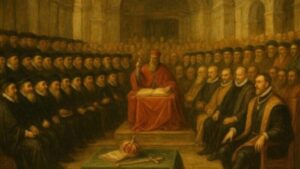 AI generated image |
第3章|二つのハプスブルク(1556〜1700年)
| 年代 | 出来事 | 図解 |
| 1556 | Abdication of Charles V; division into Spanish and Austrian Habsburgs |
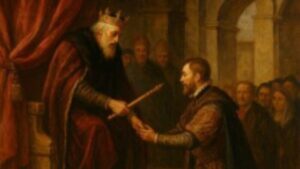 AI generated image |
| 1568 | Dutch Revolt (Eighty Years’ War) begins |
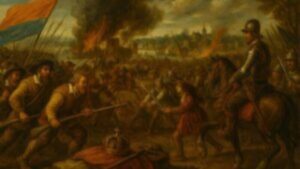 AI generated image |
| 1571 | Battle of Lepanto; Holy League defeats the Ottomans |
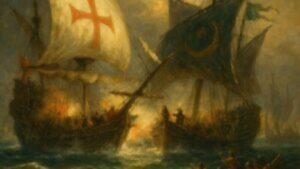 AI generated image |
| 1580 | Philip II also becomes King of Portugal |
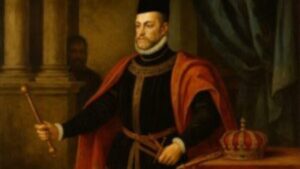 AI generated image |
| 1588 | Spanish Armada defeated |
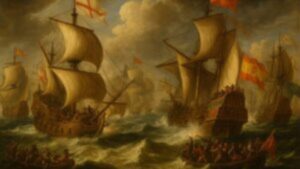 AI generated image |
| 1618 | Defenestration of Prague |
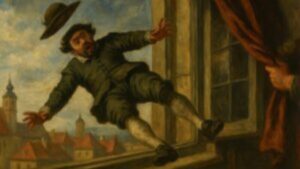 AI generated image |
| 1618 | Thirty Years’ War begins |
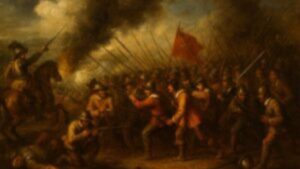 AI generated image |
| 1620 | Battle of White Mountain (Bohemian rebels defeated) |
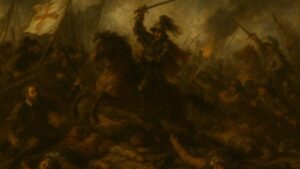 AI generated image |
| 1648 | Peace of Westphalia (end of the Thirty Years’ War) |
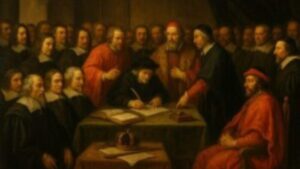 AI generated image |
| 1658 | Leopold I elected Holy Roman Emperor |
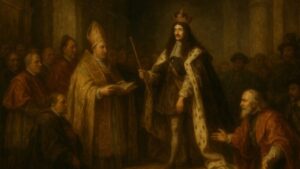 AI generated image |
| 1683 | Second Siege of Vienna; Ottoman army repelled |
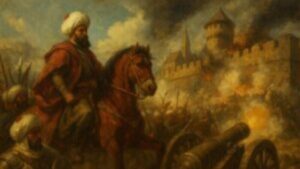 AI generated image |
| 1687 | Habsburg hereditary rule in Hungary acknowledged |
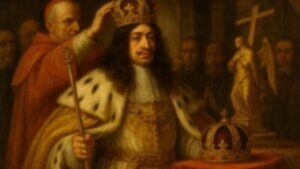 AI generated image |
| 1699 | Treaty of Karlowitz; Habsburgs gain S. Hungary & Transylvania |
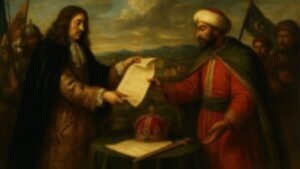 AI generated image |
| 1700 | Extinction of the Spanish Habsburg line; eve of the War of the Spanish Succession |
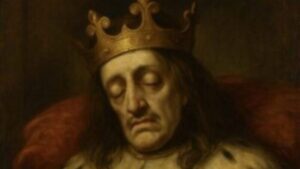 AI generated image |
Chapter 4 | Division and Re-alignment (1700–1804)
| Year | Event | Visual |
| 1701 | War of the Spanish Succession begins |
 AI generated image |
| 1713 | Treaty of Utrecht; Austria inherits Naples and the Spanish Netherlands |
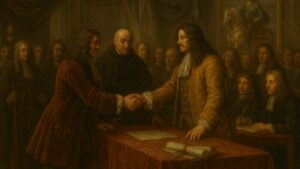 AI generated image |
| 1740 | Death of Charles VI; Maria Theresa succeeds War of the Austrian Succession |
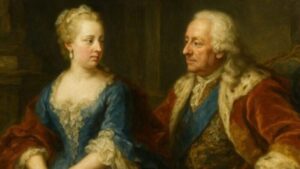 AI generated image |
| 1748 | Treaty of Aix-la-Chapelle (Aachen); war ends (map note: Silesia lost to Prussia) |
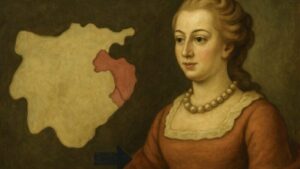 AI generated image |
| 1756 | Seven Years’ War begins |
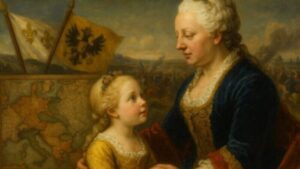 AI generated image |
| 1763 | Treaty of Hubertusburg (end of the Seven Years’ War in Central Europe) |
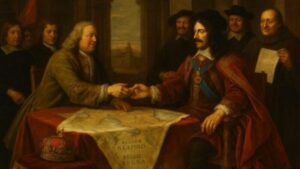 AI generated image |
| 1765 | Joseph II becomes co-ruler |
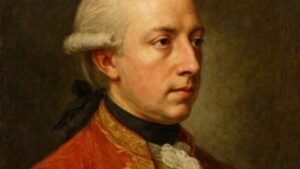 AI generated image |
| 1772 | First Partition of Poland (Galicia to the Habsburgs) |
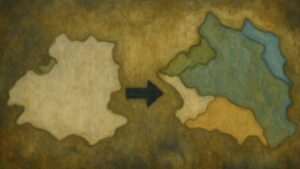 AI generated image |
| 1780 | Death of Maria Theresa; Joseph II rules alone |
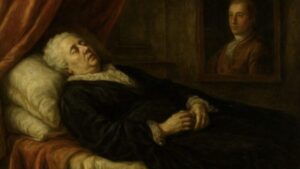 AI generated image |
| 1789 | French Revolution |
 AI generated image |
| 1792 | French Revolutionary Wars begin; Francis II succeeds |
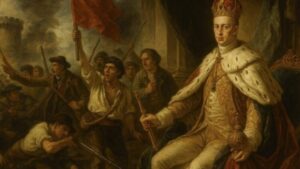 AI generated image |
Chapter 5 | The Austrian Empire and the Dual Monarchy (1804–1918)
| Year | Event | Visual |
| 1804 | Francis II assumes the title Emperor of Austria (as Francis I) |
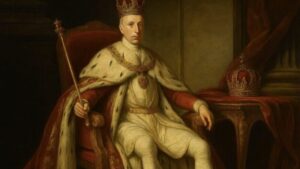 AI generated image |
| 1806 | Formal dissolution of the Holy Roman Empire |
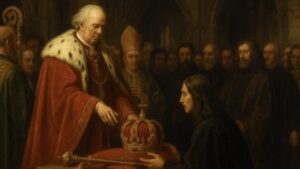 AI generated image |
| 1815 | Congress of Vienna; Austria returns as a Central European pivot |
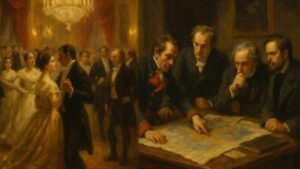 AI generated image |
| 1848 | Revolutions of 1848; Metternich falls; Franz Joseph I accedes |
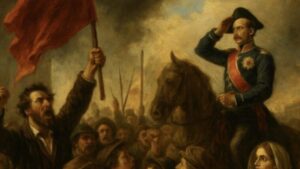 AI generated image |
| 1866 | Austro-Prussian War; Austria defeated |
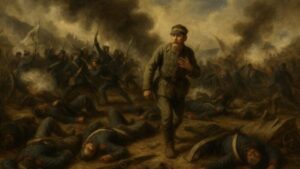 AI generated image |
| 1867 | Exit from the German Confederation; Ausgleich Austria-Hungary established |
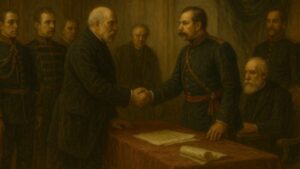 AI generated image |
| 1873 | Three Emperors’ League (Germany, Russia, Austria-Hungary) |
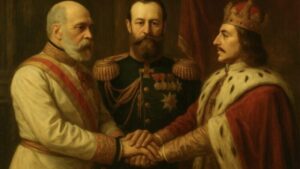 AI generated image |
| 1908 | Annexation of Bosnia and Herzegovina |
 AI generated image |
| 1914 | Sarajevo Assassination; World War I begins |
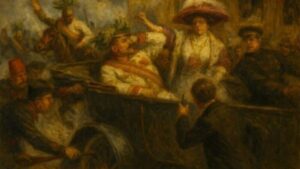 AI generated image |
| 1916 | Death of Franz Joseph I; Charles I accedes |
 AI generated image |
| 1918 | Collapse of Austria-Hungary; monarchy abolished |
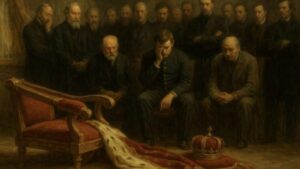 AI generated image |
Chapter 6 | After the Empire (1918– )
| Year | Event | Visual |
| 1919 | Treaty of Saint-Germain; Republic of Austria established |
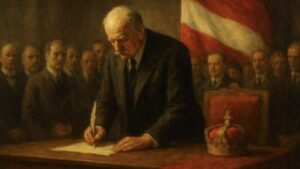 AI generated image |
| 1921 | Charles I attempts restoration; fails |
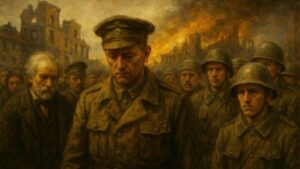 AI generated image |
| 1922 | Charles I dies in exile on Madeira |
 AI generated image |
| 1938 | Anschluss; Nazi Germany annexes Austria |
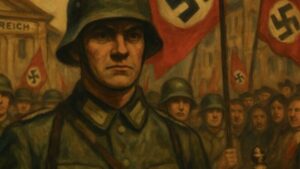 AI generated image |
| 1945 | End of World War II; Second Austrian Republic founded |
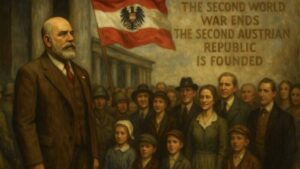 AI generated image |
| 1961 | Otto von Habsburg formally renounces claims to the throne |
 AI generated image |
| 2007 | Otto supports a European “Charter” initiative in the EU context |
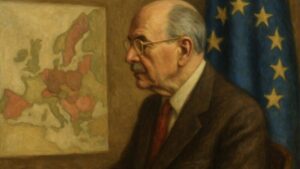 AI generated image |
| 2011 | Death of Otto von Habsburg |
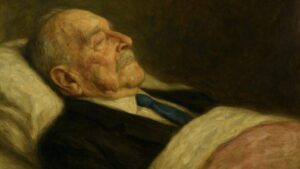 AI generated image |
Final Note
Read as dates and deeds, this timeline sharpens a larger question: what was “empire” in Europe?
The Habsburgs grew more by marriage than by the sword. They stood where politics and faith collided, held the imperial center for centuries, and then receded—yet their echoes remain.
If even one corner of your inner map was redrawn today, then this page has done its job.
・Elliott, J. H. The Count-Duke of Olivares: The Statesman in an Age of Decline. Yale University Press, 1986.
・Parker, Geoffrey. The Grand Strategy of Philip IV: The Failure of Spain, 1621-1665. Yale University Press, 2000.
・Brown, Jonathan & Elliott, John H. A Palace for a King: The Buen Retiro and the Court of Philip IV. Yale University Press, 2003.
・Stradling, R. A. Philip IV and the Government of Spain, 1621-1665. Cambridge University Press, 1988.
References
- Shūichi Iwasaki, The Habsburg Empire: A Thousand Years of History (Kōdansha Gendai Shinsho).
- Yoshio Kikuchi, An Illustrated Guide to the Habsburgs (Natsume-sha).
- German History in Documents and Images.
- Die Welt der Habsburger (Austrian state historical portal).
- Euratlas Historical Maps.
- Josephinian Land Survey (1763–1787), Austrian State Archives.
- Philips’ New Historical Atlas for Students (1911, UK).
- Image credits: © Velum Press / AI-assisted composites reconstructed from historical sources.
※ Image Notice: Some visuals on this page are AI-generated composites created for illustrative purposes. They are not historical artworks. Composition and details are based on historical sources, but stylistic elements may differ from originals.
